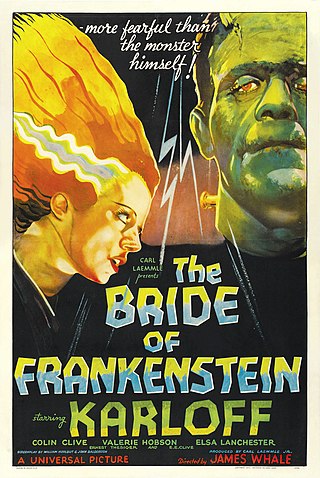
Bride of Frankenstein is a 1935 American science fiction horror film, and the first sequel to Universal Pictures' 1931 film Frankenstein. As with the first film, Bride of Frankenstein was directed by James Whale starring Boris Karloff as the Monster and Colin Clive as Dr. Frankenstein. The sequel features Elsa Lanchester in the dual role of Mary Shelley and the bride. Colin Clive reprises his role as Henry Frankenstein, and Ernest Thesiger plays the role of Doctor Septimus Pretorius. Oliver Peters Heggie plays the role of the old blind hermit.

Erotic art is a broad field of the visual arts that includes any artistic work intended to evoke arousal. It usually depicts human nudity or sexual activity, and has included works in various visual mediums, including drawings, engravings, films, paintings, photographs, and sculptures. Some of the earliest known works of art include erotic themes, which have recurred with varying prominence in different societies throughout history. However, it has also been widely considered taboo, with either social norms or laws restricting its creation, distribution, and possession. This is particularly the case when it is deemed pornographic, immoral, or obscene.

Tentacle erotica is a type of pornography most commonly found in Japan that integrates traditional pornography with elements of bestiality, fantasy, horror, and science fiction. It is found in some horror or hentai titles, with tentacled creatures having sexual intercourse, predominantly with females or, to a lesser extent, males. Tentacle erotica can be consensual but mostly contains elements of rape.
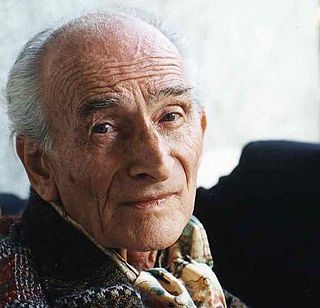
Balthasar Klossowskide Rola, known as Balthus, was a Polish-French modern artist. He is known for his erotically charged images of pubescent girls, but also for the refined, dreamlike quality of his imagery.
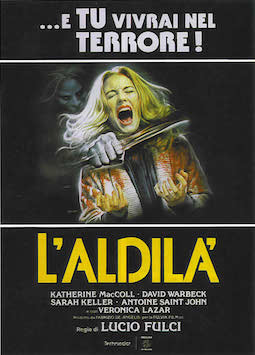
The Beyond is a 1981 English-language Italian Southern Gothic supernatural horror film directed by Lucio Fulci. It is based on an original story created by Dardano Sacchetti, starring Catriona MacColl and David Warbeck. Its plot follows a woman who inherits a hotel in rural Louisiana that was once the site of a horrific murder, and which may be a gateway to hell. It is the second film in Fulci's Gates of Hell trilogy after City of the Living Dead (1980), and was followed by The House by the Cemetery (1981).

Dracula Has Risen from the Grave is a 1968 British supernatural horror film directed by Freddie Francis and produced by Hammer Film Productions. It is the fourth entry in Hammer's Dracula series, and the third to feature Christopher Lee as Count Dracula, the titular vampire. The film stars Rupert Davies as a clergyman who exorcises Dracula's castle, and in doing so, unwittingly resurrects the Count back from the dead.

Dracula's Daughter is a 1936 American vampire horror film produced by Universal Pictures as a sequel to the 1931 film Dracula. Directed by Lambert Hillyer from a screenplay by Garrett Fort, the film stars Otto Kruger, Gloria Holden in the title role, and Marguerite Churchill, and features, as the only cast member to return from the original, Edward Van Sloan – although his character's name was altered from "Van Helsing" to "Von Helsing".
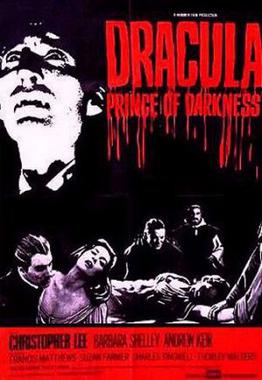
Dracula: Prince of Darkness is a 1966 British gothic supernatural horror film directed by Terence Fisher. The film was produced by Hammer Film Productions, and is the third entry in Hammer's Dracula series, as well as the second to feature Christopher Lee as Count Dracula, the titular vampire. It also stars Andrew Keir, Francis Matthews, and Barbara Shelley.

The Nightmare is a 1781 oil painting by Swiss artist Henry Fuseli. It shows a woman in deep sleep with her arms thrown below her, and with a demonic and ape-like incubus crouched on her chest. The painting's dreamlike and haunting erotic evocation of infatuation and obsession was a huge popular success.
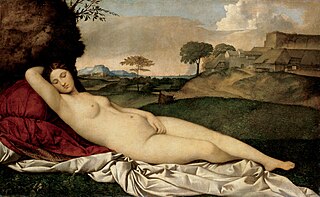
The Sleeping Venus, also known as the Dresden Venus, is a painting traditionally attributed to the Italian Renaissance painter Giorgione, although it has long been widely thought that Titian completed it after Giorgione's death in 1510. The landscape and sky are generally accepted to be mainly by Titian. In the 21st century, much scholarly opinion has shifted further, to see the nude figure of Venus as also painted by Titian, leaving Giorgione's contribution uncertain. It is in the Gemäldegalerie, Dresden. After World War II, the painting was briefly in possession of the Soviet Union.
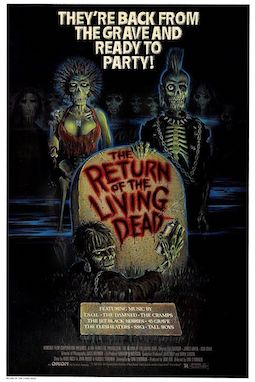
The Return of the Living Dead is a 1985 American comedy horror film written and directed by Dan O'Bannon from a story by Rudy Ricci, John Russo, and Russell Streiner, and starring Clu Gulager, James Karen, Thom Mathews, and Don Calfa. The film tells the story of how a warehouse owner, accompanied by his two employees, mortician friend and a group of teenage punks, deal with the accidental release of a horde of unkillable, brain-hungry zombies onto an unsuspecting town.

Deep Red, also known as The Hatchet Murders, is a 1975 Italian giallo film directed by Dario Argento and co-written by Argento and Bernardino Zapponi. It stars David Hemmings as a musician who investigates a series of murders performed by a mysterious figure wearing black leather gloves. The cast also stars Daria Nicolodi, Gabriele Lavia, Macha Méril, and Clara Calamai. The film's score was composed and performed by Goblin, the first in a long-running collaboration with Argento.

The Amityville Curse is a 1990 Canadian supernatural horror film directed by Tom Berry and starring Kim Coates, Cassandra Gava and Jan Rubeš. It is loosely based on the novel of the same name by Hans Holzer. It is the fifth film in the Amityville Horror film series.

The history of erotic depictions includes paintings, sculpture, photographs, dramatic arts, music and writings that show scenes of a sexual nature throughout time. They have been created by nearly every civilization, ancient and modern. Early cultures often associated the sexual act with supernatural forces and thus their religion is intertwined with such depictions. In Asian countries such as India, Nepal, Sri Lanka, Japan, Korea, and China, representations of sex and erotic art have specific spiritual meanings within native religions. The ancient Greeks and Romans produced much art and decoration of an erotic nature, much of it integrated with their religious beliefs and cultural practices.

Vampyres is a 1974 British horror film directed by José Ramón Larraz and starring Anulka Dziubinska, Marianne Morris, and Murray Brown. Its plot follows two female lovers who, having been resurrected as vampires, lure unsuspecting travelers to their dilapidated estate to feed on their blood.

Galaxy of Terror is a 1981 American science fiction horror film produced by Roger Corman through New World Pictures and directed by Bruce D. Clark. It stars Edward Albert, Erin Moran, Ray Walston, Taaffe O'Connell, and future horror film alumni Sid Haig and Robert Englund. Set in a dystopian future where humanity is a spacefaring race ruled by a sole person called "The Master," the film features a space crew confronting primal fears after they are marooned on a distant planet.

Whispers in the Dark is a 1992 American erotic thriller film written and directed by Christopher Crowe and starring Annabella Sciorra, Jamey Sheridan, Alan Alda, Jill Clayburgh, John Leguizamo, Deborah Unger, and Anthony LaPaglia. It follows a Manhattan psychiatrist who finds herself in the midst of a homicide investigation after one of her patients is mysteriously murdered.

The Beast is a 1975 French erotic horror film written, edited, and directed by Walerian Borowczyk. Although sometimes compared with Beauty and the Beast, there are no parallels in the plot except that it features the relationship between a beast (monster) and a woman. The film was noted for its explicit sexual content, including teratophilia, upon its initial release. It has become a cult film.

A Quiet Place in the Country is a 1968 giallo thriller film directed by Elio Petri, and starring Franco Nero and Vanessa Redgrave. Based on the short story "The Beckoning Fair One" by Oliver Onions, its plot follows an artist who relocates to a rural villa with his girlfriend, where he begins to experience increasingly terrifying, apparently supernatural events.

The Bunny Game is a 2010 American avant-garde horror film co-created and co-written by Rodleen Getsic and Adam Rehmeier. A prostitute searching for her next fix is kidnapped by a truck driver and subjected to extreme physical and sexual violence.



















